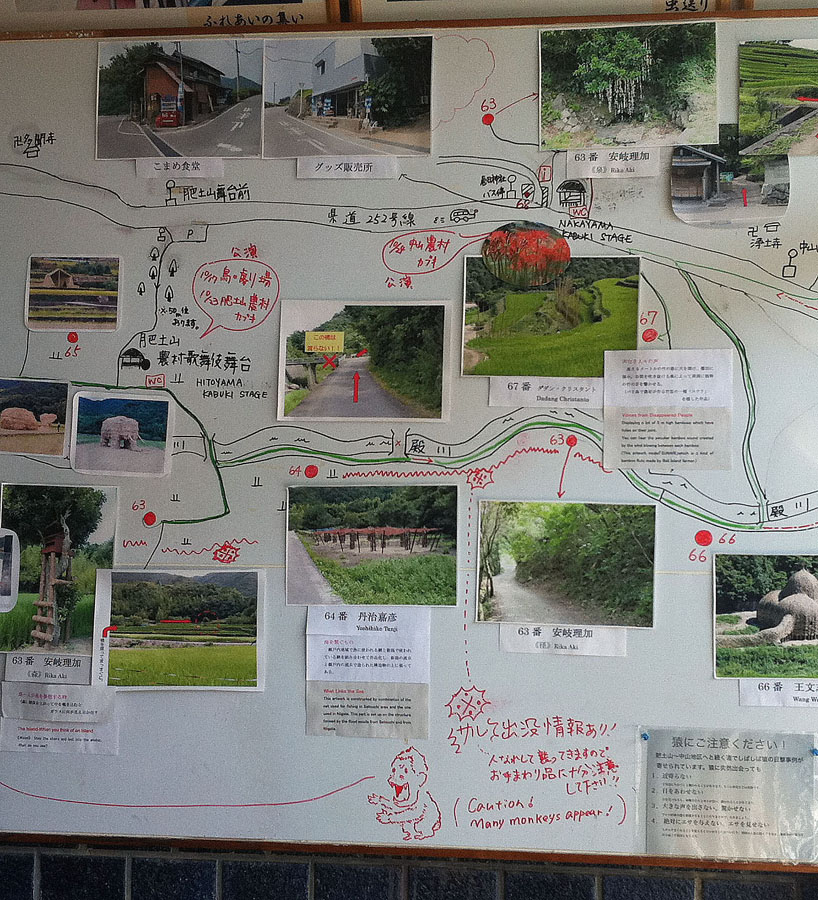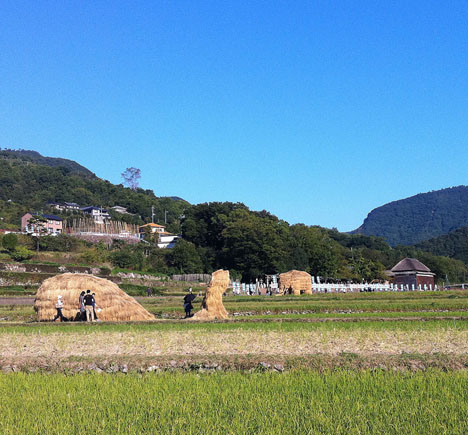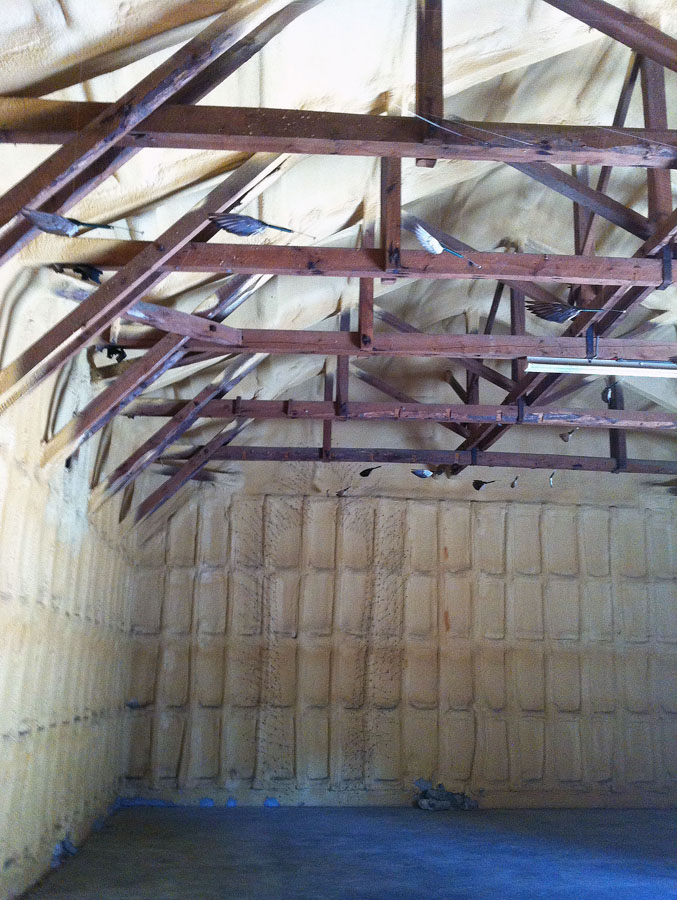SETOUCHI TRIENNALE 2010
HAPPENINGText: Tomohiro Okada
The last island I headed for was Shodoshima. As it was away from a lead of Takamatsu, Naoshima, and Okayama prefecture, it was kept away from a visiting route, but a group of exhibits was served in this second largest island among seven islands.
People working to support the art festival on the island were very open-minded and friendly.

It was a bit embarrassing to hang a name card from my neck, but “Make sure to write your name on your passport ticket. It is important in case you lose it.” The elderly men and women said to me everywhere. They had a illustrated map which was updating daily such as “A monkey appearance point” in a route. What a warm service.

This area produces rice in terraced fields. Various straw-made figures were displayed in the harvested field. These straw figures were completed finally during the art festival period. Although these pieces were not famous designer’s work, these “art works” were made in collaboration with students of Musashino Art University and local people.
You could come across a key to find the origin of friendly local people in the rural scenery. Back of the rice field there was a stage, which was built for a long time ago. People in the village have a culture to act and enjoy Japanese traditional play “Kabuki” and also have a spirit to welcome visitors from outside the village. Setouchi International Art Festival became a new pleasant event for local people.

“Giant in Our Minds” by Tatsuo Kawaguchi was located in an old rice granary. Installation pieces were displayed towards “something” which is meant to be a guardian spirit of the old building. As time has passed, “something” lives there. It is a space where I wanted to keep staying, as the installation represented artist’s respect for the local building and culture.

“House of Shodoshima” by Wen-Chih was a huge bamboo dome. People could feel comfortable wind and light in the bamboo-made dome. Most of visitors lay down and spent a relaxing time with their bare feet. This relax mood was one of main highlights of this festival where you can experience the locality.

I would like to end this report by introducing “Soil Library Project” by Koichi Kurita at the library in an old elementary school. He took soil samples from every part of the Setouchi region and used them to create a geometric pattern on the floor. The work was a visual feast of the many-layered colours of soil itself. The festival exhibited various art works that reflect local features no matter whether the artist is famous or unknown. Art provides a new viewpoint of the local scenery and creates a new culture. The festival reminded us of what has been forgotten in our daily lives and this work had a key to this answer.
A forgotten local scenery. An abolished library room has been kept in a good condition with many books donated from people in the village. An old good Japanese culture rests there. I took a history textbook for children, which ends with an episode of Japan’s postwar rehabilitation. It was written by a hard working small family company to make products that could be imported to the world. This kind of small factories worked very hard on rehabilitation after the war, and it became a symbol of Japan at the time.
This art festival was a project to connect people with not only art works but also a local culture in the Setouchi region.
I did not report about other venues of the islands such as Naoshima and Inujima, because art projects in these two islands are available to see after the festival period ends.
Many various art works will be keep exhibited in islands of Setouchi. Would you like to travel to see art works in a great rural view of Japan?
Setouchi Triennale 2010
Date: July 19th – October 31st, 2010
Place: Naoshima, Teshima, Megijima, Ogijima, Shodoshima, Oshima, Inujima, Takamatsu Port Area
Participating Artist: Featuring 75 Artists and Projects and 16 Events from 18 countries and Regions
Organizers: Setouchi International Art Festival Executive Committee
https://setouchi-artfest.jp
Text: Tomohiro Okada
Translation: Yumiko Isa
Photos: Tomohiro Okada





